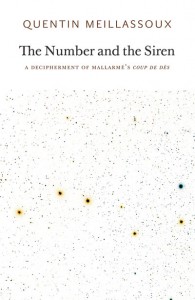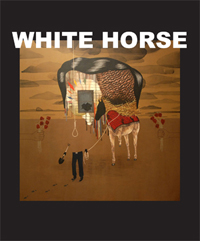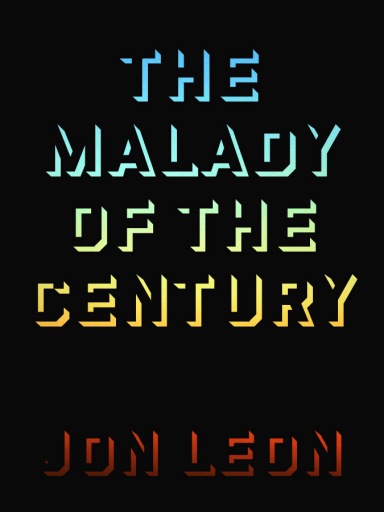Impossible Mike
http://topologyoftheimpossible.com
refuse reality, live forever.
http://topologyoftheimpossible.com
refuse reality, live forever.
 Folly: The CONSEQUENCES of INDISCRETION
Folly: The CONSEQUENCES of INDISCRETION
by Hans Rickheit
Fantagraphic Books, April 2012
144 / $18.99 Buy from Fantagraphics
“The common exclusion of the worst (folly, vice, indolence . . .) seems to me to denote servility. The servile intelligence serves folly, but folly is sovereign: I can change nothing with it.”
—Georges Bataille, Method of Meditation
The folly is my favorite architectural conceit. A building divorced from any sort of purpose, often considered mere decoration; there are architects that have turned the idea of the folly into a sort of space of affect. It seems that the folly gave way to paper architecture, to a developed insistence upon the way space can make someone feel, whether or not the space is constructed out of any sort of desire for utility.
Hans Rickheit’s book, Folly, also serves no utility. Most of the miniature narratives (if you could call them as such), find voided figures wandered through bizarre architectural constructions that seem somewhere between abandoned factory and mad-scientist laboratory, infinite labyrinthine hallways that lead to abject bio-mechanical ‘machines’ that spit out effluvia and viscera. Often, these masses of flesh and organ are alive, they produce sounds, sometimes they serve their own function (often more as that of “sustenance” or offering, battery power), always useless. They are poked and prodded, they squeak and pus.
 The Number and the Siren
The Number and the Siren
by Quentin Meillassoux
Urbanomic/Sequence Press, May 2012
306pp. / £16.99/$25.95
Buy from Urbanomic or Sequence
Meillassoux made a major splash in the world of contemporary philosophy with the publication (and more specifically, the English language translation) of his pivotal work, After Finitude: An Essay on the Necessity of Contingency. Ostensibly launching a new realm of thought organized between the titles of “speculative realism” and beyond, the book posited the idea that, despite what the last few centuries of philosophy has decided, there is a world that can and indeed has existed outside of any phenomenological experience of it; to assume that the world is dependent upon the humans who inhabit it ignores the idea that the world turns whether or not we, as humans, exist on it. And to do so it meticulously examines how this is possible with what have been traditionally described as the hard sciences; math, physical science, geology, etc.
The Number and the Siren, on the other hand, turns away from the world and instead focuses on a singular work of poetry that already has a hold over the 20th and 21st centuries—that of Mallarmé’s game changing Un Coup de Dés jamais n’abolira le Hasard. Mallarmé’s poem has been an insistent staple in the development of poetry since its publication, but Meillassoux’s approach to the work is both unique and, truly, astounding. When considering the diegesis of a work of literature, we look at a book as its own internal world, in some modes of thought as a self-contained entity oblivious to the outside. This is both an often short-sighted AND revelatory method of reading a text.
READ MORE >

[matchup #49 in Tournament of Bookshit]
The year was 2012 and we were all under the assumption that, in some way or another, the world would end soon. We knew that the Mayans had nothing to do with it because, as we all know, when one calendar ends we just buy a new one, we don’t assume the worst. Capitalism might collapse, geotraumatic insistence might just find us no longer rooted on the earth, it’s too bad NASA itself is gone. All that’s left to feel is our own collective solar body moving through time and space.
We find our bodies in bars, we find our bodies consuming alcohol, we find our bodies consuming more alcohol, we find ourselves going outside for a cigarette, we watch stars plummet and all make the same wish; that we can sustain, that the world won’t end, that our accelerated reality stops, calms down, pauses for a second. READ MORE >
But these operations do not occur in neutral territory, Kaye was quick to point out. Burroughs treats all conditions of existence as results of cosmic conflicts between competing intelligence agencies. In making themselves real, entities (must) also manufacture realities for themselves: realities whose potency often depends upon the stupefaction, subjugation and enslavement of populations, and whose existence is in conflict with other ‘reality programs’. Burroughs’s fiction deliberately renounces the status of plausible representation in order to operate directly upon this plane of magical war. Where realism merely reproduces the currently dominant reality program from inside, never identifying the existence of the program as such, Burroughs seeks to get outside the control codes in order to dismantle and rearrange them. Every act of writing is a sorcerous operation, a partisan action in a war where multitudes of factual events are guided by the powers of illusion … (WV 253-4). Even representative realism participates – albeit unknowingly – in magical war, collaborating with the dominant control system by implicitly endorsing its claim to be the only possible reality.
From the controllers’ point of view, Kaye said, ‘it is of course imperative that Burroughs is thought of as merely a writer of fiction. That’s why they have gone to such lengths to sideline him into a ghetto of literary experimentation.’
 White Horse
White Horse
Multi-authored chapbook (Including work by writers: Harold Abramowitz, Saehee Cho, John Cleary, Traci O Connor, Jennifer Denrow, Andrew Farkas, Sandy Florian, Paul Gacioch, Evelyn Hampton, Paul Hardacre, HL Hazuka, Kristen Jorgenson, Carrie-Sinclair Katz, Bob Marcacci, rob mclennan, Shane Michalik, Megan Milks, Cathi Murphy, Eireene Nealand, Kristen Orser, Kristin Prevallet, Zach Savich, Michael Sikkema, Jason Snyder, & James Wagner)
Sidebrow, March 2012
78 pages / $12 Buy from Sidebrow
Being a combinatory effort from a number of authors, it should strike one as no surprise that White Horse seems to be a dialogic narrative. The title remaining somewhat obtuse, save for a specific reference near the end (and tho how can we assume a meaning over all), haunts the work as a whole. In consideration of a multi-authored novel there are two routes one can take—the first being to consider the book as a book, authorless, the second being to consider the book a work of collaboration.
While I had a hope that the book would read authorless, it’s unfortunate that this is not the case. The authors are given attribution at the end of the book, and there are striking divides within the stylistic approaches each few pages take. One can feel the authors who repeat. This posits the book ultimately within the realm of collaboration, and ultimately more of a multi-person dialog than anything else. A novel experiment, it ends up seeming more of an exercise in curation rather than a coherent whole.
Hypersynthetic drugs click into digital voodoo.
Retro-disease.
Nanospasm.
 THE MALADY OF THE CENTURY
THE MALADY OF THE CENTURY
By Jon Leon
Futurepoem Books, May 2012
88 Pages / $16.00 Buy from SPD
In consideration of the work of Jon Leon, it is necessary to consider Jon Leon, the poet, simultaneously as an apostle and a construction. Anna Kaven (nee Helen Emily Woods) ended up, at a particular point in her career as a novelist, changing her name from that which she was born with to a name she had invented for a character in one her own books—Jon Leon has always simply insisted on living as a character in his work, as the character in his works.
His poetry.
There is a level of both the inter-textual and the extra-textual interaction present throughout his entire oeuvré; something that becomes apparent throughout his career. As Dan Hoy points out in his case-study of Leon, there’s a particular overlap of reality with a poetic construction of reality:
“We mixed agitprop, erotic dance, and horror to construct a total environment of focused bliss.” Jon Leon, Hit Wave
I’ll risk substituting tropes here and suggest the above sentence from Jon Leon’s Hit Wave could be taken somewhat literally as a nod to his overall objective (construct a total environment of focused bliss = enable and induce the experience of the impossible) and strategy (mixing agitprop, erotic dance, and horror = forming a triangulation of world, life, and nothingness).
These samples are from an ongoing series of Internet based digital videos. These seemingly infinite looping videos articulate the Internet as space of viewership that is increasingly becoming a platform to represent, archive, and reproduce the real. The content within these digital tableaus are based from the contents within drawings I create before documenting/repurposing them into the aforesaid videos. There is no physical (institutionalized) space that is designated for exhibition exclusivity for this body of work, as they may be viewed anywhere the Internet or a computer is available.
[Click images to view]
*Finite_Skin uses a zoom user interface which allows a viewer to explore the details of the drawing.
 Sediment
Sediment
by CF
PictureBox, 2011
62 Pages / $30 Buy from PictureBox
CF is one of the few people—successfully, in my opinion—working in comics today with a distinct style that is simultaneously distinctly his (though often copied), while also reminiscent of the historical narrative of comics that came before him; recalling specifically Windsor McCay’s work from the beginning of the 20th century, and the multitude of Euro-comics in the 70s and early 80s (think Guido Crepax, Milo Manera or even a primitive Moebius). There’s a hint of what could be considered a naïve sense of character proportion, an acute attention to architectural shapes, and an abject (“melting”) sort of representation.
READ MORE >